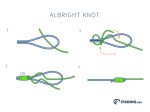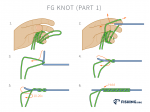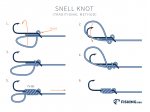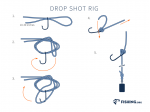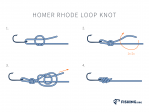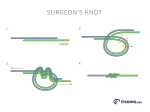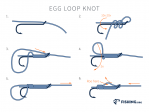Surgeons End Loop

Surgeons End Loop
Fly fishing requires knowledge about three basic types of knots: line-to-line knots, which join lines of varying strength; terminal knots, which joins hooks and lures to your fishing line, and loop knots, which secure the lures. A fishing line is available in many different material types, but the two most popular lines are monofilament and braid. Loop knots are tied with an open loop end, where a line can be tied at the end of it to make a connecting system. One of the stronger loop knots is the ‘Surgeons End Loop.’ Tying a Surgeons End Loop is very similar to tying a Surgeon’s Knot. However, the Surgeons End Loop is used to loop a line back on itself, creating a stronger loop to affix many different lures and fishing tackles.
Step 1:
Hold the line and double it up.
Step 2:
Tie a loose over-hand knot.
Step 3:
Pass the loop end of the line through the knot again.
Step 4:
Hold the tag end with the loop to tighten the knot and pull. As a simple trick to get a tight pull, fishermen moisten the line. Clip and trim excess line.
Our Take:
Surgeons end loops are popular because of their 100% strength hold. This loop is used by freshwater fly anglers and has also become a favorite with saltwater fishermen. The premise in using this type of fishing loop, is to serve as a loop to loop connection. Using loops makes it possible to change leaders in seconds. With a strong, dependable loop connection, you are not awkwardly working with a knot that is binding when you have a tippet that is attached to a leader, when a leader attaches to a fly line or when a fly line is attached to your backing. You need a strong non-slip surgeons end loop for each piece of fishing equipment to be joined together by interlocking the loops.
 Joshua Keaton
Joshua Keaton 
